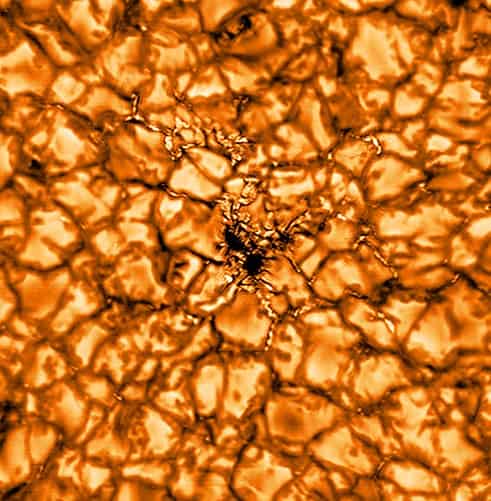New images captured by the GREGOR telescope in Tenerife, Spain, are giving us an unique view of the surface of the sun.

These are the highest-resolution images of our host star ever taken by a European telescope, according to the authors. The results definitely support that claim — they give us a stunning look at the shapes and movements of solar plasma and the eerie dark voids of sunspots.
Sunspotting
Although GREGOR has been in operation since 2012, it underwent a major redesign this year and also suffered a temporary pause in activity due to the pandemic. Now it’s up and running again, and its new, improved systems allow it to spot details as small as 50 kilometers in size on the solar surface. It might not sound like much, but this is the highest resolution of any European telescope (and, relative to the sun’s diameter of 1.4 million kilometers, quite good).
“This was a very exciting but also extremely challenging project,” said Lucia Kleint, who led the upgrade efforts on GREGOR. “In only one year we completely redesigned the optics, mechanics, and electronics to achieve the best possible image quality.”
To give you an idea of the telescope’s new abilities, she describes the images it captured as “if one saw a needle on a soccer field perfectly sharp from a distance of one kilometer”.

The sun isn’t a solid object with a static, solid contour. Rather, its surface is always roiling and churning with super-heated plasma. The new images from GREGOR show the twisting structures created on the star’s surface and the contrasting darkness of sunspots. Sunspots are areas on the solar surface where magnetic fields are extremely strong, generating a spike in local pressure which darkens the area.






